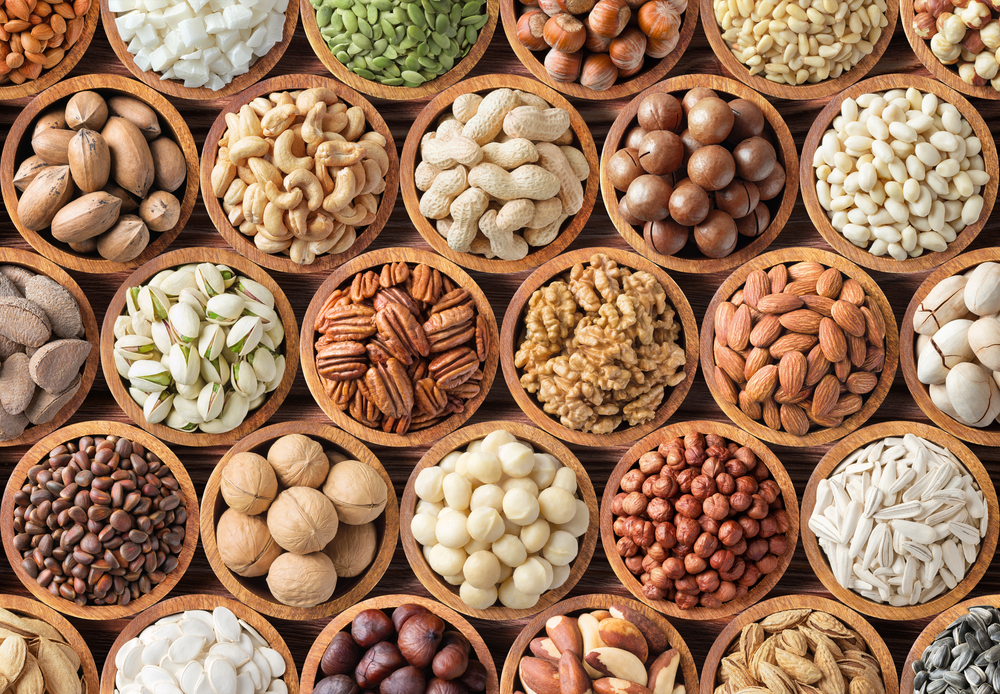
Nuts
With nuts, also called dry fruit, it is intended the kind of fruits composed by an hard and resistant shell that protects the seed, in general the edible part.
The most common types of shell fruit is represented by nuts, almonds, hazelnuts, pistachios, and pine nuts, cultivated and produced in Italy, to which are added more exotic fruits, such as cashews, Brazilian nuts, Pecan, or Macadamia nuts.
These are foods with high nourishing value: excellent sources with high level of saturated fat, rich of vitamins, minerals, phytosterols.
They are particularly suitable for maintaining a normal level of cholesterol in the blood and for their antioxidant and anti-inflammatory action.
Precisely, these nutritional properties represent a great opportunity for the supply chain, which must adapt to a model of consumption of the product in the constant growth finding the way to implement the sustainability of crops.
The production and processing phases of the shell fruit variates according to the fruit and the final product destination.
For example, the main stages of hazelnut production are as follows:
- Harvest of the fruit from the agricultural producers, which then introduce the raw material into the distribution circle through wholesalers, or organizations of fruit and vegetables producers;
- First transformation: the enterprises of the first transformation play a phase of first treatment and manipulation of the product;
According to the destination of the fruit the following phases are:
- Cleaning
- Drying
- Calibration
- Shelling
- Polishing
- Roasting process
- Scouring
- Plasticization.
The product is then sold either on the fresh market or to confectionery industries that process it to obtain their finished products.
The shell fruit consumers at global scale are in clear increase, indeed they production passed the 2 million of tonnes in 2020.
Europe is the continent with major consume (26%), followed by North America (23%) and Asia (20%). Data from 2020 on the production of shell fruit in Italy report that 146.698 hectares of surface are dedicated to this kind of cultivation, for a total production of 2.312.698 quintals of fruit, with a value of 525,1 million of euros.
Sustainable Soil and Crop Protection
With the Sustainable Soil and Crop Protection is promoted the usage of new sustainable technologies for the crop’s protection and the environment’s tutelage; with the scope of guaranteeing a better food safety and a smaller impact on the nature.
The fundamentals principle detectable in the adjectives ‘healthy, sustainable, and traceable...
Supply chains involved:
Plant-based Beverages Cereals Canned Foods Nuts Fruit and Vegetables WineryFood Safety and Quality
With the term ‘Food Safety’ it is intended a normative and sanitary ambit that comprehends a series of new practices and rules that have the purpose of ensuring the quality of the food product bought from a citizen-consumer. Indeed, under this optic the food product must be consumed in a healthy way, must be hygienic and risk...
Supply chains involved:
Cereals Canned Foods Nuts Fruit and Vegetables WineryProcess and Product Innovation
The shift to the Industry 4.0 is a moment of deep change and innovation capable to disrupt all the sectors.
The industry 4.0 is considered as a new Industrial Revolution that appears to be even more disruptive of the previous ones. It is seen as such because it is born from the convergence of the IT and OT technologies to create a digit...
Supply chains involved:
NutsSupply chains involved:
Plant-based Beverages Coffee Cereals Chocolate Canned Foods Beer Dairy Products Nuts Food Supplements and Nutraceuticals Milk Plant oils Fruit and Vegetables Pasta Meat Baking products Sweet products Rice Cold Cuts and Cured Meats WinerySupply chains involved:
NutsSupply chains involved:
Dairy Products Nuts Food Supplements and Nutraceuticals